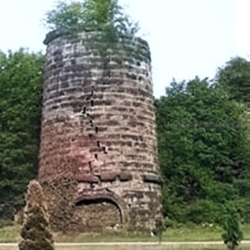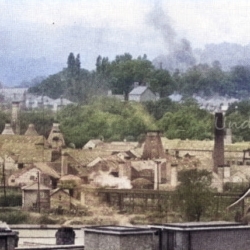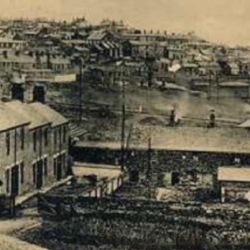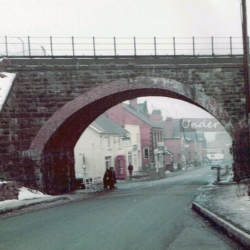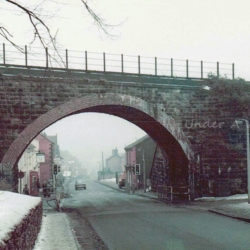The village of Acrefair, lies midway between Wrexham and Llangollen in North Wales, in the community of Cefn. It was formerly part of the ancient parish of Ruabon, and is located between the towns of Wrexham and Llangollen. It is close to the villages of Trevor, Cefn Mawr, Ruabon and Plas Madoc.The main road from Wrexham to Llangollen still runs through Acrefair but not on the same route as that used by the ‘turnpike’ road up to the mid-19th century. Then the road diverted right just after the Hampden Arms public house down Bethania Road (Then known as Black Lion Road after a local public house) towards the original village centre, some half mile way. Here were situated two pubs, a post office and a shop. Roads led off up to Ruabon mountain and down Chapel Street towards Cefn Mawr. The turnpike road carried on towards Llangollen on what is now a simple path.
Acrefair has a long industrial history, with coal, iron and clay all being produced in the area, and the remnants of such industries still scar the landscape. The village flourished in the 19th century and the village centre moved to its present location on Llangollen Road . The building of the main Wrexham to Barmouth railway bisected the village with one of Robertson’s ‘Skew Bridges’ being built to take the railway high over the village. Close to the bridge was situated the Eagles Inn,and the bridge became know as ‘Pont Betsen’. The railway station opened and rows of terraced houses sprang up in all directions along Llangollen Road and towards Cefn Mawr. Many of these houses were tied to local companies.
Edward Lloyd Rowland established an ironworks in Acrefair in 1817. Following his bankruptcy in 1825, the works were bought by the British Iron Company. The company was re-formed in 1843 as the New British Iron Company and they continued to operate the works until its closure in 1887. The site eventually became home to Air Products limited, an American company which produced air separation and cryogenic storage equipment, who moved into the area around 1950 providing much needed employment. Their arrival and the subsequent expansion of their factory car park led to the demolition of ‘British House’, built by the New British Iron Company around 1860 for use by their directors and managers and containing a large Board Room. The site ceased commercial operations in late 2009, and the area is now destined to be yet another housing development.
Nearby, the Delph Clayworks was started around 1860. It was owned by Thomas Seacome and manufactured bricks and chimney pots from the nearby deposits of fireclay situated above the works, on the Pen-y-cae road. A simple gravity tramway truck system conveyed the clay to the works but by 1928 the best clays were worked out. Ownership moved to Wyndham & Phillips, who produced salt-glazed fireclay sanitary pipes and moulded fittings for export all over the world, including Cairo, Port Elizabeth and Buenos Aires. At its peak, there were 18 kilns at the Delph Works with about 100 men including press-men, moulders, bricklayers, carpenters, blacksmiths and engineers. The works closed in 1955.




